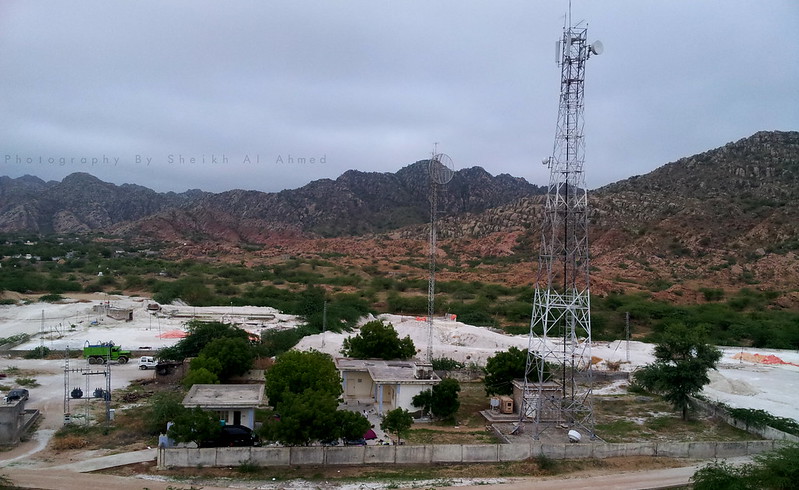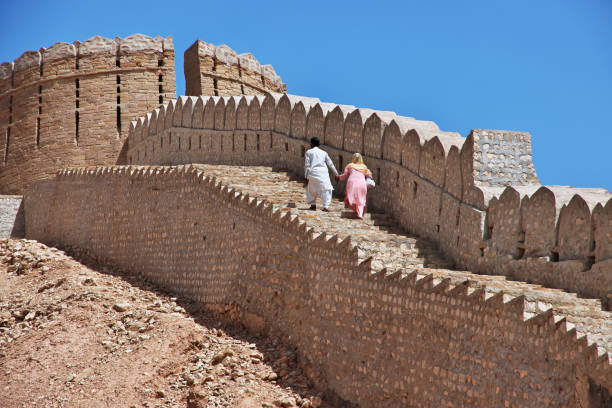
-Ranikot Fort, often referred to as the Great Wall of Sindh, is a monumental structure located in the Jamshoro District of Sindh, Pakistan. Its historical significance and geographical positioning make it a remarkable site worth exploring in detail.
Historical Significance
Ranikot Fort’s history remains mysterious. Many historians believe the Talpur dynasty built it in the 17th century. The fort was not just for military use; it protected against invaders during chaotic times. During British colonial expansion, it played a key defensive role. Around 1812, Nawab Wali Muhammed Leghari expanded the fort. He spent 1.2 million rupees to strengthen its walls and bastions. This shows how vital the fort was for the Amirs of Sindh. However, they later fell to British control. Ranikot Fort has impressive architecture. Its semi-circular walls, made of sandstone and gypsum, stretch across rough terrain. The fort includes 45 bastions and four main gates. Among these, the Sann Gate stands out for its strategic design. Inside the fort, Miri Fort serves as a smaller structure. It likely acted as the royal home for the Mir family. This highlights its importance as both a place of power and a refuge during conflicts.
In addition, Ranikot’s historical value is widely recognized. It became protected under Pakistan’s Antiquities Act of 1975. Furthermore, it was nominated for UNESCO World Heritage status in 1993. This recognition not only honors its stunning architecture but also highlights its role in Sindh’s history.
Geography
Ranikot Fort is located about 30 km southwest of Sann in the Kirthar Range. Its location was carefully chosen for natural defenses. The fort’s walls follow the shape of the hills, making it hard for attackers to enter. The area around the fort is full of rugged mountains and dry land, adding to its intimidating appearance. Moreover, the fort connects several lonely peaks in the Kirthar hills. This connection strengthened its role as a powerful military stronghold. The builders of Ranikot Fort used local materials like stone and lime mortar. These materials were important for creating such a large structure. The fort’s design includes a zigzag pattern. This pattern not only looks beautiful but also helps in defense. The northern side is very steep and covered with mountains, giving it natural protection. At the same time, strong walls protect the other three sides Ranikot Fort, often referred to as the Great Wall of Sindh, serves as a powerful symbol of the resilience and ingenuity of the Sindhi people. This majestic structure embodies centuries of regional history, spanning from the Talpur era to the period of British colonial rule. Its significance extends beyond mere architecture; it represents the cultural identity and heritage of Sindh
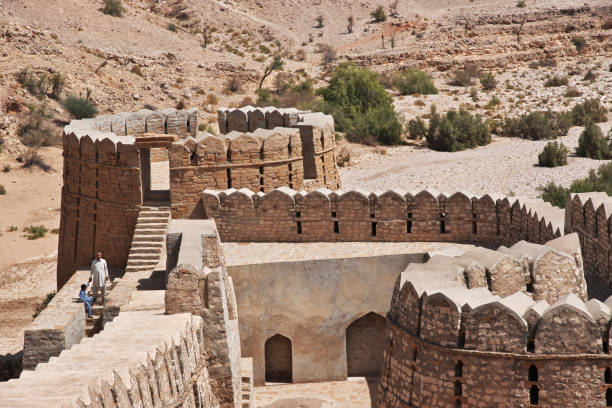
Cultural Identification
Locals call Ranikot Fort the “Dewar-e-Sindh.” The fort represents the rich history of Sindh. Its walls are more than just barriers; they tell stories of struggles and victories. Beautiful floral carvings decorate the fort, showing the talent of craftsmen from different times. These carvings combine beauty with purpose. The bastions were also adapted for gunpowder warfare, blending art with practicality. Together, these features highlight the fort’s importance for defense during difficult times.
Ranikot Fort is more than just a historical site. It is a symbol of pride for Pakistanis, reflecting their rich heritage and culture. Efforts to preserve the fort highlight its value in today’s world. Local communities actively help maintain it. They see it as more than a relic; it is a living part of their culture. Folklore and traditions keep its legends alive. People pass down these stories through generations, strengthening the fort’s place in their hearts and minds.
Historical Context
The history of Ranikot Fort is surrounded by mystery. Many believe the Talpur dynasty built it, but some think earlier civilizations, like the Sassanians or Indo-Greeks, may have contributed. This uncertainty adds to the fort’s intrigue. Scholars still debate its origins and purpose. Archaeologists have found ancient coins and artifacts inside the fort. These discoveries show that it was an important center for politics and trade in the past.
Since 1993, Ranikot Fort has been on UNESCO’s tentative list for World Heritage Sites. This recognition highlights its global importance. It also helps raise awareness and supports efforts to preserve the fort on an international level.
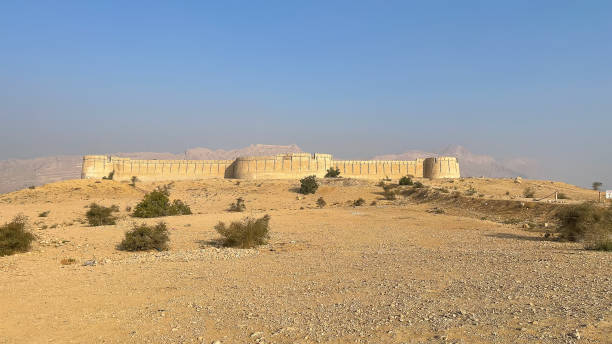
Near by Attractions
- Sann Town: Located just a short distance from Ranikot, Sann Town is known for its essential amenities and its connection to the famous Sindhi Sufi poet Shah Abdul Latif It serves as a convenient stop for supplies before heading to the fort.
- Kirthar National Park: Approximately 40 km from Ranikot, this national park is Pakistan’s second- largest and is home to diverse wildlife, including the Sindh ibex, wild sheep, and various bird species. It offers opportunities for hiking, wildlife watching, and enjoying the natural beauty of the Kirthar Range.
- Amri Archaeological Site: Located about 30 km from Ranikot, this ancient site features remains of one of the earliest urban settlements in South Asia, dating back to the Indus Valley Civilization. It provides insights into the region’s historical significance.
Why Visit Ranikot?
- Imposing Structure: The fort’s massive walls create a dramatic silhouette against the landscape, making it a visually stunning site that commands attention from miles
- Zigzag Design: The unique zigzag formation of the fort not only enhances its aesthetic appeal but also serves as a strategic defensive feature, making it an interesting architectural
- Diverse Fortifications: Ranikot Fort is interspersed with multiple bastions, including semi-circular and rectangular designs, showcasing various military architectural styles adapted over
- Natural Defense: The northern perimeter of the fort is naturally steep and mountainous, providing an additional layer of protection and enhancing the fort’s strategic significance.
- Meeri Fort: Within the larger complex lies Meeri Fort, approximately three kilometers from the Sann This smaller fort served as the royal residence for the Mir dynasty, offering insights into the lifestyle of historical rulers.
- Rich Flora and Fauna: The surrounding Kirthar Range is home to diverse wildlife and plant species, making it a great spot for nature enthusiasts and photographers.
- Cultural Heritage: The fort is a living testament to Sindh’s cultural heritage, with local folklore and traditions that enrich the visitor experience.
- Historical Artifacts: Visitors can find ancient graveyards and watchtowers within the fort complex, adding layers of historical significance to your exploration.
- Accessibility: Ranikot Fort is easily accessible from major cities like Karachi and Hyderabad, making it a convenient destination for day trips or weekend getaways.
- Camping Opportunities: The vast open spaces around the fort provide excellent opportunities for camping under the stars, allowing visitors to immerse themselves in nature.
- Photography Hotspot: The combination of stunning architecture, natural beauty, and historical significance makes Ranikot Fort a paradise for photographers looking to capture unique
- Local Guides Available: Knowledgeable local guides can enhance your visit by sharing stories and insights about the fort’s history and significance.
- UNESCO Tentative Status: Being on the tentative list for UNESCO World Heritage Sites adds to its prestige and highlights its importance in global heritage conservation
Community Engagement: Local communities are involved in preserving and promoting Ranikot Fort, providing visitors with an opportunity to engage with local culture and traditions.
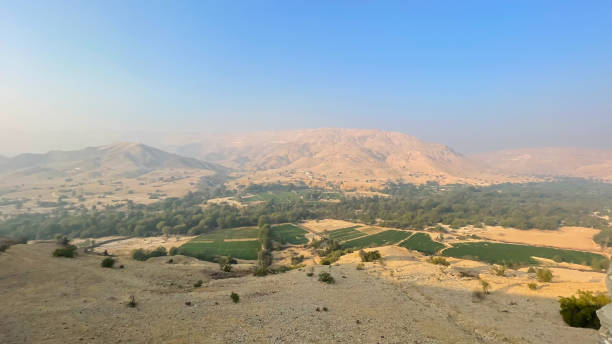
Travel Tips
- Plan for Daylight: Aim to arrive early in the day to maximize your exploration The fort is best enjoyed with ample daylight for photography and sightseeing.
- Stay Hydrated: Carry sufficient water, especially if you plan to hike or The arid climate can be dehydrating, particularly during warmer months.
- Pack Snacks: Bring along some light snacks or a packed lunch, as dining options may be limited near the fort.
- Dress Appropriately: Wear lightweight, breathable clothing suitable for outdoor Consider layering, as temperatures can vary throughout the day.
- Sturdy Footwear: In addition to sturdy shoes, consider wearing hiking boots if you plan on trekking through rough terrain or exploring the fort’s various levels.
- Camping Gear: If you wish to stay overnight, bring camping gear including tents, sleeping bags, and cooking supplies. Check local regulations regarding camping in the area.
- Local Currency: Ensure you have enough cash on hand, as credit card facilities may not be available in remote areas near the fort.
- Camera Gear: Don’t forget your camera or smartphone for capturing the stunning architecture and scenic views. Bring extra batteries and memory cards.
- Respect Local Customs: Be mindful of local customs and traditions while visiting. Dress modestly and behave respectfully in this culturally significant area.
- Hire a Local Guide: Consider hiring a local guide who can provide historical context and insights about the fort’s architecture and significance.
- Check Weather Conditions: Before your trip, check the weather forecast to prepare for any changes in conditions that may affect your visit.
- Explore Nearby Attractions: Plan to explore nearby attractions such as the Kirthar National Park or other historical sites in the region to enrich your travel
- Safety Precautions: Always inform someone about your travel plans and expected return time, especially if trekking alone or with a small group.
- Emergency Kit: Carry a small first aid kit with essentials like band-aids, antiseptic wipes, and any personal medications you may need.
- Mobile Connectivity: Be aware that mobile signals may be weak or nonexistent in certain areas around Ranikot Fort. Download maps or information beforehand.
Transportation
- Access Routes: Ranikot Fort is accessible via the Indus Highway (N55), which connects major cities like Karachi and Hyderabad to the The journey from Karachi takes approximately 3 to 4 hours, while it is about 1.5 hours from Hyderabad.
- Road Conditions: The last stretch to the fort involves a rugged road leading to the eastern gate, known as Sann Travelers should be prepared for uneven terrain, especially if they are driving their own vehicles.
- Public Transport: While public transport options exist, they may be limited and less convenient. Hiring a private vehicle or joining a tour group is often recommended for ease of access.
- Entry Points: The fort has multiple entry gates, including Sann Gate, which is well-preserved and provides access to various parts of the Visitors can explore different sections at their own pace or with a guide.
- Guided Tours: Hiring local guides can enhance the experience by providing historical context and insights into the fort’s architecture and significance.
- Facilities: While basic facilities may be available near the fort, visitors are encouraged to carry essentials such as water, snacks, and first aid kits since options may be limited on-site.


